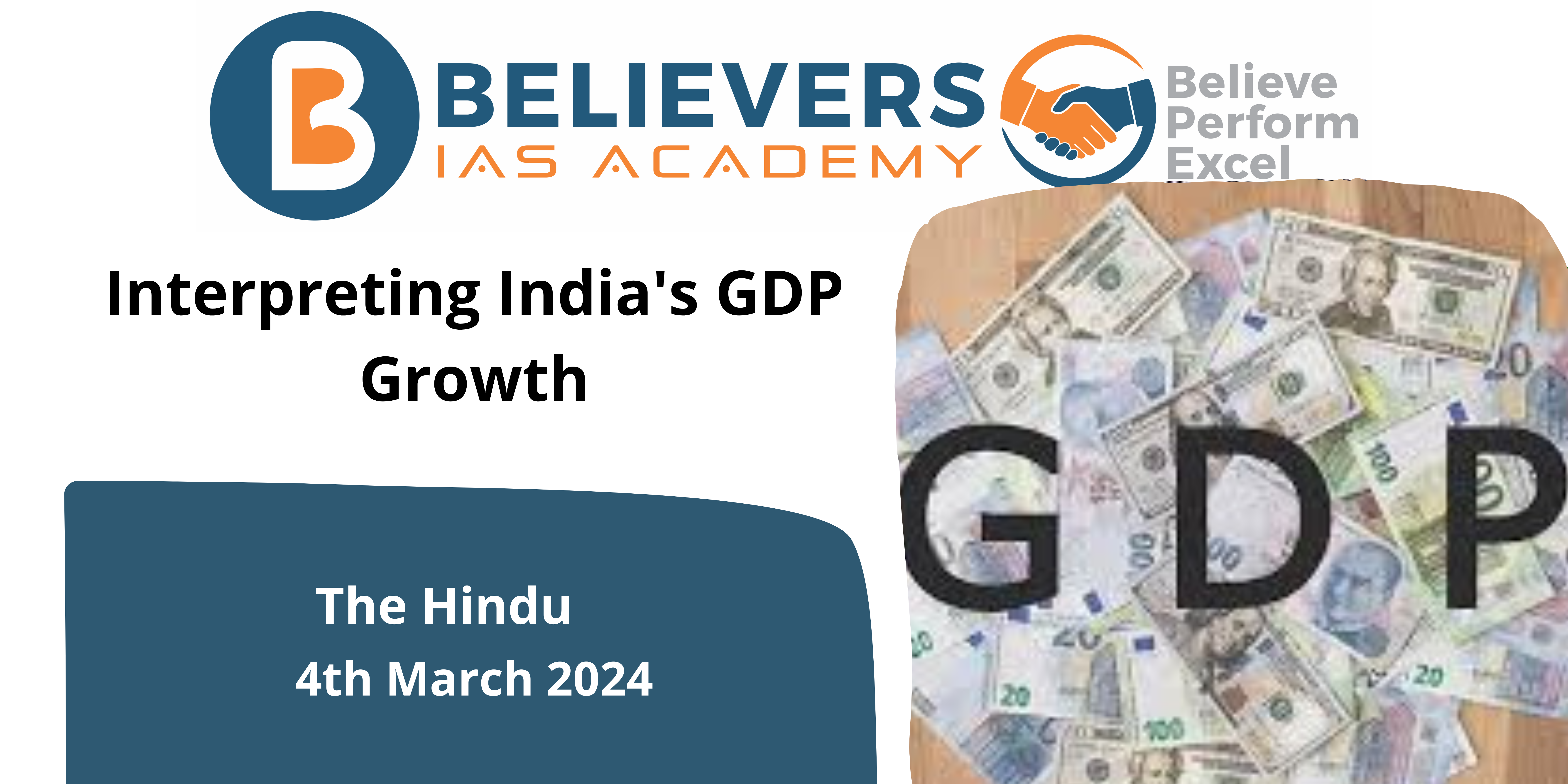Interpreting India’s GDP Growth
Context:
Recently, National Statistical Office (NSO) released the latest GDP data showing a robust 8.4% year-on-year growth in real GDP for October-December quarter.
- Some economists express surprise and skepticism regarding the significant differences between official estimates and their projections.
Relevance:
GS-02 GS-03 (Government policies and interventions, Economy, Growth and Development)
Prelims:
NSO, Gross domestic product, Gross Value Added
Key Highlights:
- NSO revises estimates for previous fiscal years, leading to upgrades in current fiscal’s GDP growth forecast.
- Gross Value Added (GVA) growth slows to 6.5% in the third quarter, reflecting challenges in real productive sectors.
- Private consumption spending and government expenditure show lackluster growth, raising concerns about economic health.
- The upcoming general election adds significance to the GDP data, but a thorough analysis is needed to understand the true state of the economy.
Dimensions of the Article:
- Examining GDP Growth
- Gross Value Added (GVA) Perspective
- Concerns on Consumption and Expenditure
- Gross Domestic Product (GDP)
- Gross Value Added (GVA)
- Relationship between GDP and GVA
Examining GDP Growth:
- The recent release of GDP data by the National Statistical Office (NSO) has stirred both excitement and skepticism among economists and analysts. The reported 8.4% year-on-year growth in real GDP for the October-December quarter has been met with enthusiasm in the markets. However, some experts find it challenging to reconcile these official estimates with their own projections, which often differ by a significant margin.
- Revised Estimates and Implications: One factor contributing to the revised GDP estimates for the current fiscal year is the NSO’s adjustments to data from previous years.
- The real GDP growth for 2021-22 has been revised upward to 9.7%, leading to a downward revision of GDP expansion for 2022-23 to 7%.
- These revisions inherently impact the year-on-year growth rates and must be considered when interpreting the headline GDP numbers.
Gross Value Added (GVA) Perspective:
- While the GDP growth figures may appear promising, a closer look at the Gross Value Added (GVA) paints a more nuanced picture.
- GVA growth slowed to 6.5% in the third quarter, indicating challenges in the real productive sectors of the economy.
- Notably, the rural agriculture sector contracted by 0.8%, contributing to the overall slowdown in GVA growth.
Concerns on Consumption and Expenditure:
- The data on private consumption spending and government expenditure reveal concerning trends.
- Private spending saw meager growth of 3.5% year-on-year, while government consumption expenditure actually declined by 3.2%. These figures raise questions about the underlying strength of the economy and its ability to sustain growth in the long term.
Gross Domestic Product (GDP):
- GDP is a measure of the total monetary value of all final goods and services produced within a country during a specific period. These are goods and services purchased by the end user.
- Four Key Drivers of GDP Growth:
- Private Final Consumption Expenditure (PFCE): Money spent by individuals on personal consumption.
- Government Final Consumption Expenditure (GFCE): Government spending on current consumption, such as salaries.
- Gross Fixed Capital Expenditure: Investments made to enhance the productive capacity of the economy, including both private and government investments.
- Net Exports (NX): The difference between exports and imports, representing the net effect of international trade.
- Calculation of GDP: GDP is calculated as the sum of private consumption, gross investment, government investment, government spending, and net exports (exports minus imports).
Gross Value Added (GVA):
- GVA measures the total value generated by all sectors of an economy from the supply side.
- It represents the value added across different sectors, calculated as the difference between output value and intermediary inputs.
Relationship between GDP and GVA:
- GDP is calculated using GVA data, and their relationship is represented by the equation GDP = GVA + Taxes – Subsidies.
- When government tax revenue exceeds subsidies, GDP surpasses GVA.
- GDP data is essential for analyzing annual economic growth and for comparing economic performance over time or with other countries.
- GVA measures the total value added across different sectors of the economy.
- Understanding the relationship between GDP and GVA provides insights into the overall economic health and productivity of a nation.
Way Forward:
Addressing underlying structural issues, fostering investment and consumption, and promoting inclusive development should be central to India’s economic agenda. By prioritizing evidence-based decision-making and adopting a holistic approach to economic analysis, India can navigate challenges and capitalize on opportunities for long-term prosperity.




